Ligeti is greeted by ‘oh, yeah!’
mainAt David Bernard’s ‘InsideOut Concerts’ the audience is seated within the orchestra.
Here’s what happened at the end of Ligeti’s Atmospheres.
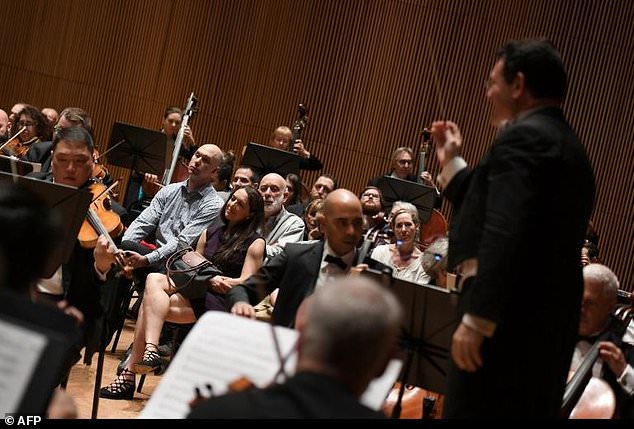

At David Bernard’s ‘InsideOut Concerts’ the audience is seated within the orchestra.
Here’s what happened at the end of Ligeti’s Atmospheres.

The US violinist has announced she is still…
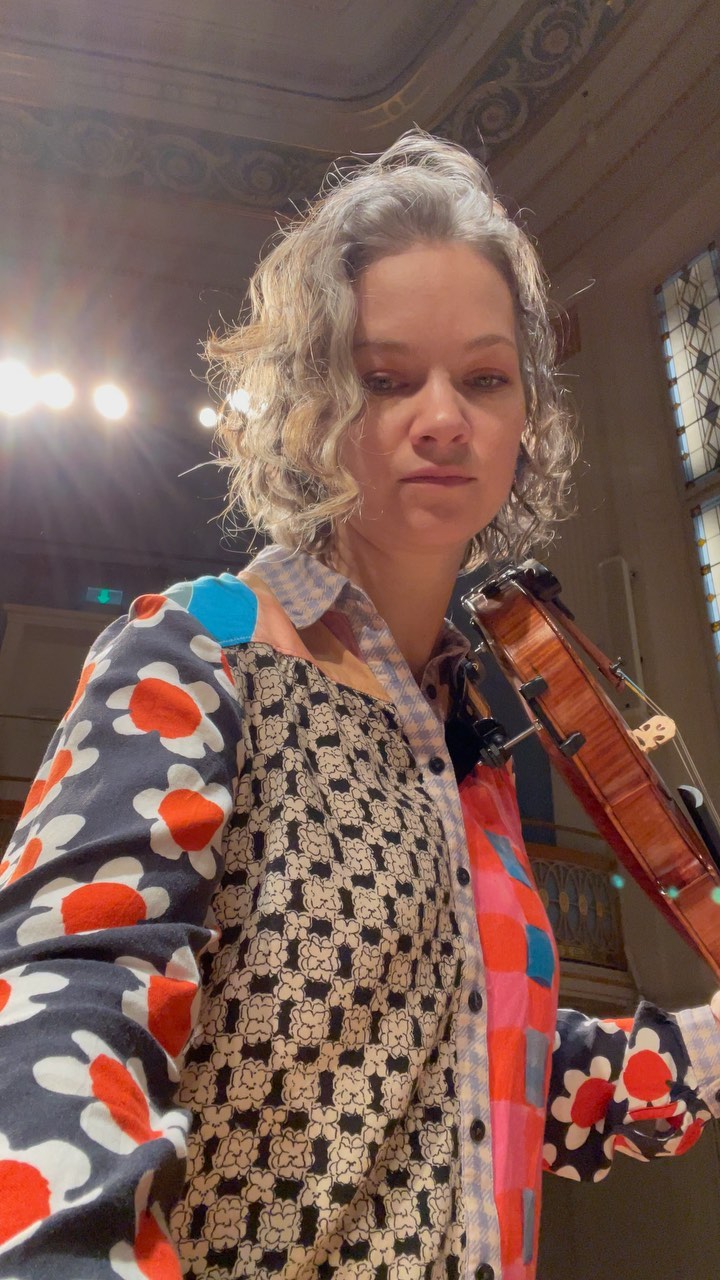
We gather that Juilliard has summarily fired a…
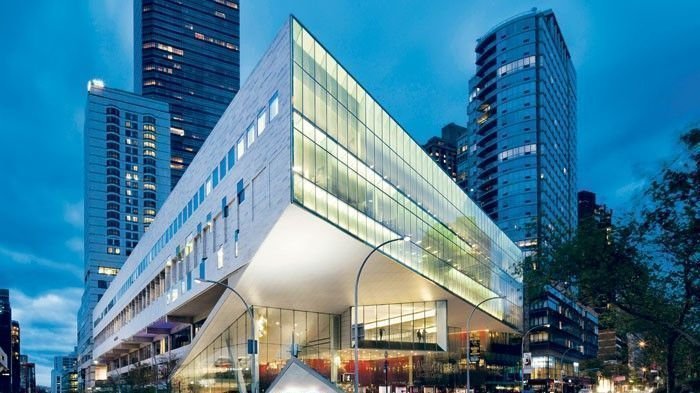
The Atlanta gadfly music critic Mark Gresham reviewed…
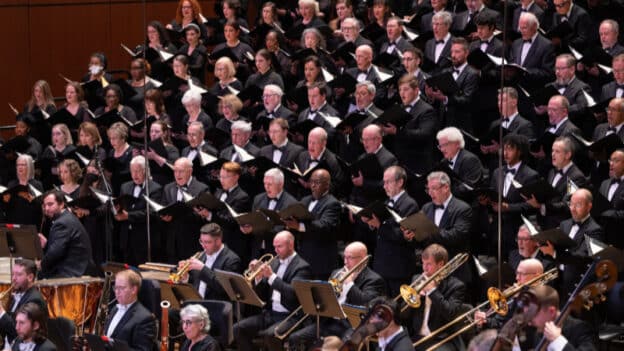
The Teatro Colón in Buenos Aires has appointed…
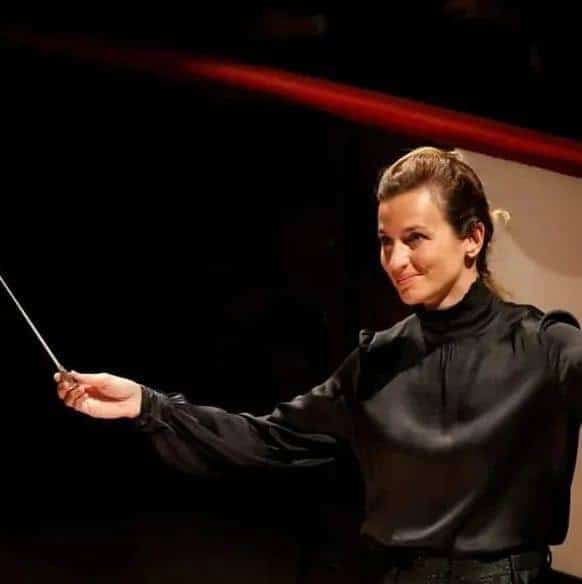
Session expired
Please log in again. The login page will open in a new tab. After logging in you can close it and return to this page.
Don’t like the idea of the audience being boxed in for these modern pieces so you can’t escape the awful racket!
Please feel welcome to stick to classical pops concerts. There are plenty of them, and you won’t be boxed in there.
^ and the orchestra will be more than happy to accept your money 🙂
(Seriously though: we still get letters when we play “horrible modern garbage” like Rite of Spring)
Well, what do you expect if you insist on playing garbage?
Hahahahahahahahahahahahahaha
They have to keep inventing “fun” ways for the audience to be part of the show, since nobody actually enjoys listening to this nonsense.
We actually did this once with a Schubert symphony. It worked well.
I’m sure it did. People love gimmicks.
Do you know your Kubrick Mister Harrumph?…
Do you know your Alphonse Allais?
Ligeti and “awful racket” don’t go together. The only thing being boxed in is a biased mind unwilling to explore and grow. If you have listened to Ligeti and don’t like what you hear, my apologies. If you think of everything after Brahms as “modern pieces” with “awful racket”, then that’s unthinking bias. Even across Ligeti’s sizeable output there is a great variety. Try Clocks and Clouds. You can find it on YouTube. I doubt anyone listening to Atmospheres is feeling boxed in. It is marvellous music (think 2001).
He’s never heard a note of Ligeti in his life. It doesn’t do to take these Bufton-Tuftons at face value…. they’re just venting for self-aggrandizement. While typing their messages here, they have their ‘Best Of James Last’ LPs playing in the background.
Not everyone is as masochistic as you are, Spiggy.
A friend of mine made a wonderful comment about Ligeti’s music in general, and specifically about his concertos for piano and cello: “If you played any of these concertos backwards, they’d sound no different.”
Indeed they don’t sound different in a musical way, but they sound different in the way the patterns are perceived, also if this does not make it more, or less interesting. Ligeti’s atonal pieces are very sophisticated, and well-thought-out. They demand, at least, respect, and as sound art they belong to the best (like, for instance, ‘Melodieen’ in spite of the absence of melodies):
https://www.youtube.com/watch?v=rhkEpXtz71g
Amazing you know my musical tastes better than me! I must consult your tremendous expertise sometime for find out what it is. Amazing how people like you never allow anyone to have different tastes.
I know that you called Ligeti an ‘awful racket’. So you told us yourself about your alleged ‘tastes’ in music.
But do please keep complaining – how could I take such a pleasure away from you?
Another marvelous Ligeti piece is “Watching Paint Dry”. Absolutely haunting and life-changing.
I see we have a whole Convention of James Last fans here today.
I’m serious. Ligeti’s “Watching Paint Dry” is the best autistic music since Vivaldi. Hands down. Or, in your case, forearms down?
The “watching paint dry” is a tired old joke, but it’s usually applied to movies or some visual art. But I guess “listening to paint dry” might sound stupid, even to you.
since language is extremely difficult in many contemporary pieces, this is a wonderful way to involve audience and feel the music as something “alive”, and understand it… I like it!
What a great idea. Giessen Theatre in Germany was also doing this with children’s concerts back in the 1990’s.
The challenge with developing classical music audiences isn’t so much getting people in the seats—you can do that quite effectively by accompanying film scores. Classical music needs to develop in audience members a true love of the music itself, and must give audience members an experience worthy of the commitment to go to a live event. This is why I started InsideOut Concerts—bringing audiences inside a full symphony orchestra to see, hear and feel the music the way the musicians do, and in turn giving them an experience that is unforgettable. Still, modern music is not usually thought to be ‘easy’ for audiences (that’s what they say) and programming Ligeti was a risk. But I’d always felt that in fact this format was perfectly suited for exploring new music in a vivid, up-close way.
I programmed Ligeti as part of a space-themed InsideOut program. I was looking for a work that spoke beyond our solar system, and Ligeti’s Atmospheres was just the right choice programmatically. But despite all my theorizing, I wasn’t sure how the audience would react. While we’ve had great success using InsideOut to turn innocent bystanders into classical music lovers in one afternoon using standard repertoire (our first program featured Beethoven’s Fifth), an eight-minute Ligeti work is another story. However, new works have a much better shot at grabbing the attention of audience members when presented in a format that fully engages the audience, rather than simply delivering sounds to them at a distance.
As the video demonstrates, the audience was indeed fully engaged, looking around the orchestra as Ligeti’s sororities evolved section by section. At the end of the work, when that one audience member proclaimed “Oh Yeah,” I knew we had done something pretty rare, at least in my experience, and he had merely vocalized what we were all feeling. Can this work have ever aroused such a visceral response in an audience? I tell you, as a conductor i had never felt anything like it with a modern work. As someone who is passionate that we need to be extending and refreshing the core repertoire, it felt like, maybe, we’d struck gold.
Courageous initiative and great that such things happen once in a while, even if it is ony ‘testing the water’. But the video also invites for some questions:
Is it really necessary to put the audiende in a locked-up situation to experience the 3D dimension of the work? The regular placing of the orchestra at one side of a hall and the audience filling-up the rest of the space is not splitting-up the two parties, but putting the players in the best possible position. In a good hall the music will ‘encapsulate’ the listener, and he/she will experience the music all around and blended, not ‘flat’ as if it were a screen somewhere in the distance.
‘Normal music’ if it is well-written, has also a 3-D structure: in acoustic terms, strings in front, then the woodwinds, then brass and percussion. The idea is that the different layers of sound blend and mix, and in the same time solo lines can easily lift themselves from the group. In musical terms, classical music has a foreground (what we hear as a texture) and a background (the tonal dynamics which holds the music together) and a middle ground which connects the two. This is the ‘virtual inner space’ of tonal music. Sonic art, like Ligeti’s Atmospheres, consists of sound patterns and variations of timbre, and since there is no tonality in it, an inner space is not possible. To compensate for this, one can turn the listening experience into a literal one: locking the audience within the orchestra. Isn’t this merely a crude, materialist form of what happens in classical music in an imaginary way?
Is experiencing Atmospheres in such literal 3-D way a MUSICAL experience? Or a purely acoustic one? How much imagination does a listener need to ‘understand’ the piece?
Thanks for your thoughtful comments. I have two thoughts in response. First, music making is not exclusively sonic, at least from the musician’s perspective. Musicians see, hear and feel the music, and it is this multi-dimensional perspective that I believe is a primary factor in drawing people into music making obsessively. Unfortunately the experience of traditional audiences in concert halls is more exclusively a sonic experience, where the hearing and feeling the music is significantly diluted when compared to the musician experience.
One thing to remember is that we live in different times now than a decade or two ago. In the past, one would have to attend a live concert in a great hall to hear music of the highest quality. Now, delivery of sound is not as exclusive to live concerts—one can get pretty good sound from recordings on ubiquitous devices. To make a case for live music, we therefore must deliver compelling experiences, not simply sound. That is a change from traditional objectives for classical concerts, but it is an important one. Audiences are looking for experiences.
Second, I find the phrase “locking the audience within the orchestra” an interesting way to describe what you saw. In what way locked? In a concert hall you are “locked” into the seat you purchased. In an InsideOut event, I rotate audience members after period of time to experience music making from different perspectives, so at least in one way, these performances are less locked than others.
One other point— while the acoustics of a traditional concert can be wonderful, there are benefits to truly experiencing 3D perspectives of music making from inside the orchestra. Case in point— seasoned concert goers who attended our Beethoven’s 5th from the InsideOut came not expecting anything new as they have attended many live performances of this work. They were surprised to discover that this work from inside presented an entirely different experience. They were able to hear, see and feel the contrapuntal writing unfolding around them in a way they never expected—and they loved it.
The acoustical enhancement of the room we use provides a layering of overall room sound with the immediate sounds. It is certainly different than the nice blended sound of Carnegie Hall, for example, but also quite powerful and unique as an experience.
To answer your question, music making is much more than a sonic experience, though the delivery of sound is of course important. Letting the audience experience all of these dimensions (hearing, seeing and feeling) as part of the orchestra results in a powerful experience that draws in new audiences and is also compelling to concert goers….
I find this a quite revealing reaction…. and I sincerely think you are wrong in many respects. To begin with, I thought it was clear from my comment that I made a distinction between music which has an imaginary inner space through tonality, and the literal, ‘material’ space if the purely acoustical is meant. A musical work does NOT need a literal 3-D ‘experience’ to convey its expression and musical meaning. Hearing Beethoven V in the middle of it, like a player, may be interesting but that is NOT the way the music is meant for the listener. Think of the carefully worked-out balance of the scoring by the composer, to produce an effect on the listener who is at some distance from the orchestra and not in the middle of it. The individual players never get the right impression of overal balance, and therefore we have a conductor, to organise all the produced sound in such a way as he or she can detect from the score.
Then, the most surprising claim:
“Unfortunately the experience of traditional audiences in concert halls is more exclusively a sonic experience, where the hearing and feeling the music is significantly diluted when compared to the musician experience.” How do you know? How can this be anything else but a purely subjective assumption? Could it not be the case that traditional audiences come to live concerts, in spite of their CD collection, for the thrill of the musical experience, and NOT for the mere sonic experience? It is really a crass claim and looks like a tool to advocate purely sonic performances, of sonic art like Ligeti’s , Xenakis’, etc. etc. which has done away with the inner space of the imagination. And then, the comparison of the player’s experience of the music with the listener’s, is confusing two fundamentally different contexts: the listener is NOT supposed to experience the mksic as if he were a player for the simple reason that he is not the player, he is the listener.
And to conclude:
“To make a case for live music, we therefore must deliver compelling experiences, not simply sound. That is a change from traditional objectives for classical concerts, but it is an important one. Audiences are looking for experiences.” Where to begin to point-out the fundamental mistakes of such thinking? Audiences of classical music come to the concert hall for a compelling MUSICAL experience, which is delivered if the orchestra plays really well. That is ALL any performer needs to achieve, and this is hard enough. People who look for other types of experiences, should go to a sport event, or a wrestling match, or visit the zoo where they can walk around and make comments on the antics of apes and dolphins without any need to sit still and concentrate and applaud at the right moments. The insinuation that a classical concert consists of merely ‘simply sound’ is missing the point of the art form altogether, and it is most surprising, to say the least, to hear such thing from a conductor, of all people.
Such approach to performance is best suited to sonic art, where the ‘compelling experience’ is on the literal, material level, and I think it is definitely an excellent idea to experiment (concerning sonic art) with seating, spatial distribution, visuals like video projections and the like – I say this without irony – but please, leave music alone.
Maybe this helps to better understand the art form:
https://www.futuresymphony.org/deep-listening/
I’ll do you one better.
https://youtu.be/0Cg_0jepxow?t=1420 (listen to end of movement)
I was present for this concert and it was mesmerizing. The Ligeti was a completely different experience live than on a recording and even more interesting to be in the middle of it. I got goosebumps from it, finding the constantly changing harmony unlike anything I’d ever heard in the concert hall. It was like waves and waves of sound coming from different places in the universe, creating a sonic image then quickly disappearing. It’s really lazy to just throw about wisecracks about it unless you’ve heard it live. Kudos to David Bernard for constantly raising the bar of the concert-going experience.
Two personal notes.
* As a teen in the early ’70s, I was at a concert of the Dearborn Symphony, where they played the Webern orchestra pieces (!!). One of the pieces ends with an alarming crescendo after nothing but a minute of pianissimo to prepare it. An elderly woman jolted in her seat and yelled out, “THAT WILL BE ENOUGH OF THAT!”
* I laughed during a Haydn symphony once (forget which one) at the Detroit Symphony because he did something FUNNY. Haydn often does. Well, you would think I just farted at the queen the looks I got. I wanted to say, “didn’t ya hear what he did there?” but wisely kept quiet.